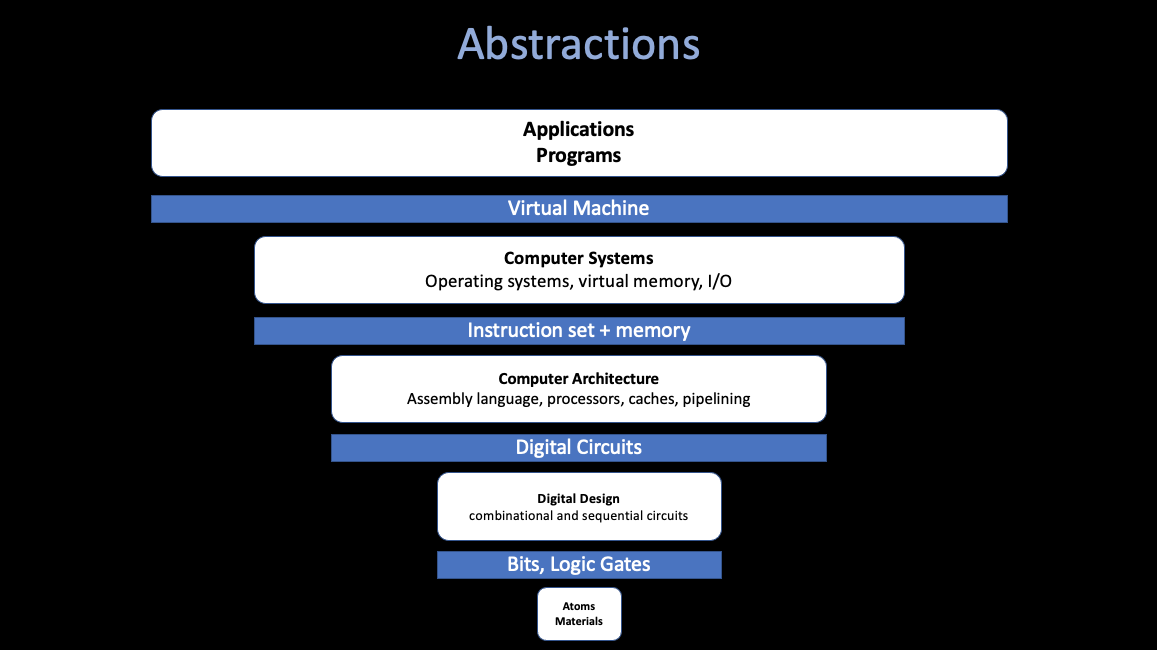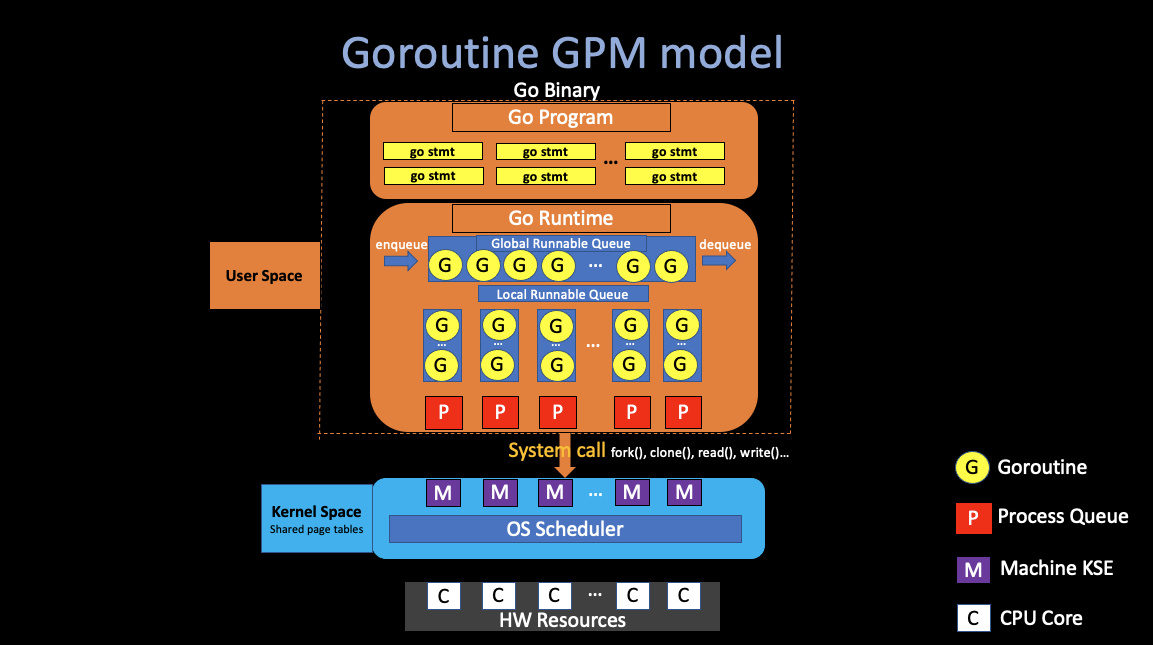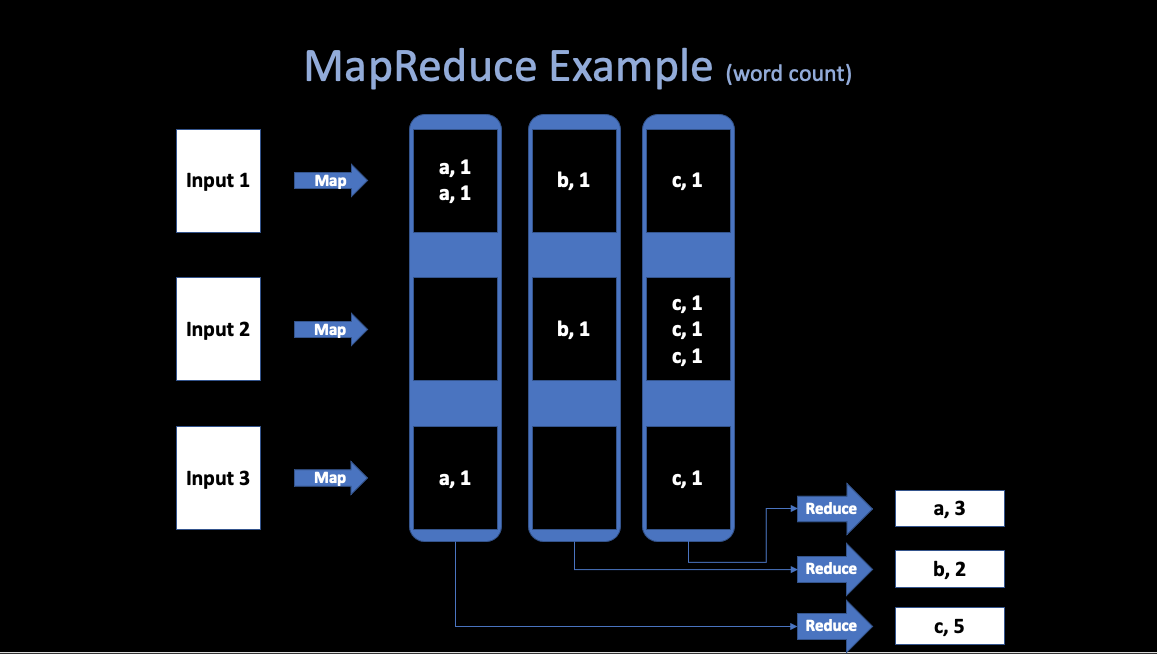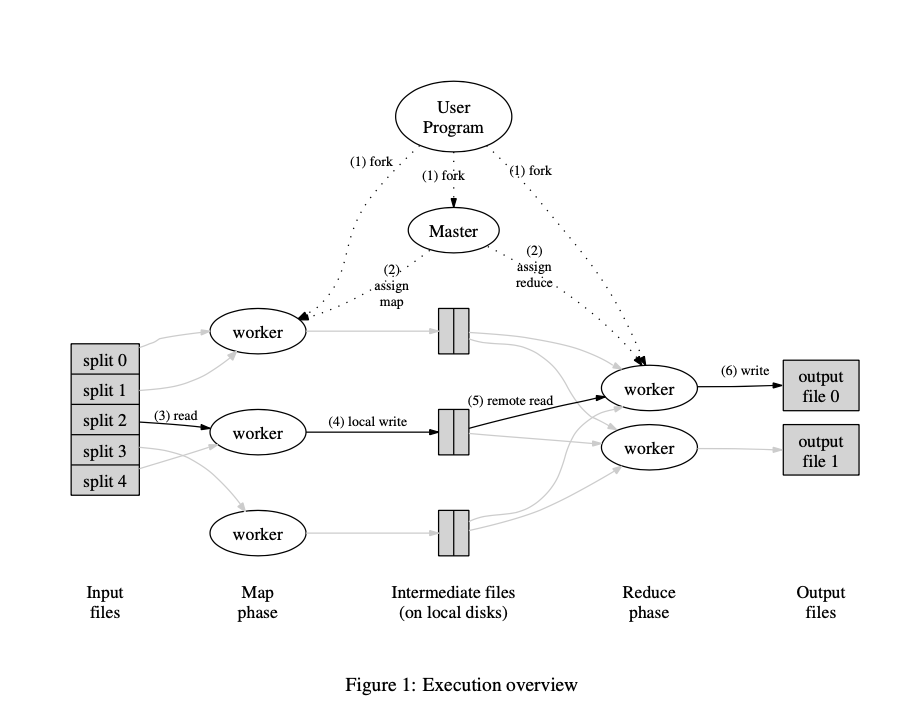A4 Spring 2022 Webinar Series
1. MapReduce
Host By Angold Wang 02/25/2022
Prologue: The Power of Abstraction

These Abstractions let us reason about the behavior of our building blocks, without understanding the implementation details underneath.
Thread
- IO concurrency
- While some threads are waiting for I/O, other threads can utilize the CPU resources.
- Parallelism
- Execute code in parallel on several cores.
- Convinence
- Relatively simple to programming
User
- Most User: Do not aware / care.
- Computer Enthusiast (Geek): Intel Core i7-12700K, 12 Cores / 20 Threads.
- Some Programmers: Thread vs. Process.

Programming Language
- User-level Threads
(N:M)*- The kernel is not aware of the existence of these threads.
- These threads are usually inside 1 or more process, managed by the Thread Scheduler of the programming language itself.
- Example: Golang:
goroutine.
- Kernel-level Threads
(1:1)- Kernel Scheduling Entity (KSE)
- The minimum-executable unit in the machine.
- Managed by the OS Scheduler
- Example: C:
pthread, Java:java.lang.Thread, C++std::thread.
Thread implementation in Golang - Goroutine

- Each goroutine is an independent unit of execution, which have its unique stack.
- Go’s runtime uses resizable, bounded stacks, initially of only 2KB/goroutine. (the runtime grows and shrinks).
- Work-stealing scheduling algorithm.
Operating Systems
Threads and Processes are the same !
They are all KSEs, and the OS manage them through the OS Scheduler.
1. Distributed Systems
i. What a Distributed System is?
A set of cooperating computers that are communicating with each other over network to get some conherent task done.
- Storiage for big websites
- Big data computations (MapReduce)
- …
ii. Why People Need a Distributed System?
Usually, the high-level goal of building a distributed system is to get scalable speed-up.
- “More” Data and Computations
- Scalability
- 2x computers -> 2x throughput (huge win)
- Parallelism: Split the computations into multiple machines. (MapReduce)
- High-throughput: Split the request data into pieces and read them conrurrently from different servers (GFS).
- Phsical Reason
- Security / Isolated
iii. Challenges
- Fault Tolerate.
- Big distributed systems: Failure problems just happen all the time !
- The failure has to be built into the design.
- Recoverability
- Achieve this Scalability. (not infinite)
- Build the Interface.
- The “Abstraction”.
- We’d love to be able to build interfaces that look and act just like non-distributed storage and computation systems, but are actually with vast and extremely high performance fault tolerant distributed systems underneath.
- Consistency
- How to make Replicas consistent.
- Communication problem (Weak and Strong consistency)
2. MapReduce
i. Overview
Back to 2004, engineers in Google were were looking for a framework that would make it easy for non-specialists to be able to write and run giant distributed computations.
- Analysis Crawled Documents
- Build a index of the web
- Sort Web requests logs
- …
- Multi-hour Computations
- Multi-terabyte Datasets
- Multi-thousand Machines
- How to parallelize the computations ?
- How to distribute the data ?
- How to handle failures ?
ii. Programming Model
In a programmer’s view, the computation recieves many files, and takes a set of input key/value pairs, then produces a set of output key/value pairs.
Example: word count

Map
- Written by the User.
- Recieve input files and then produces a set of output key/value pairs.
- MR calls
map(k, v)for each input filek, and its containsv, produces set ofk2,v2” intermediate” data.
map(String key, String value) {
// key: document name
// value: document contents
for each word w in value:
Emit(w, "1");
}Reduce
- Wirtten by the user.
- Recieve key/value pairs from
Map. - Then merge together these values with same key to form a possibly smaller set of values.
- MR gathers all intermediate
v2for a givenk2, and passes each key + values to a reduce call. - Final outut is set of <k2, v3> pairs from
reduce(k2, v2)s.
reduce(k, v)
// key: a word
// value: a list of counts
int result = 0;
for each v in values:
result += ParseInt(v);
Emit(AsString(result));MapReduce scales well
- N “worker” computers get you Nx throughtput.
maps can run in parallel, since they don’t interact. Same forreduces.- In that way, you can get more throughtput by buying more computers.
3. Implementation Details
i. Runtime Details (check my notes):

ii. RPC MapReduce Implementation
